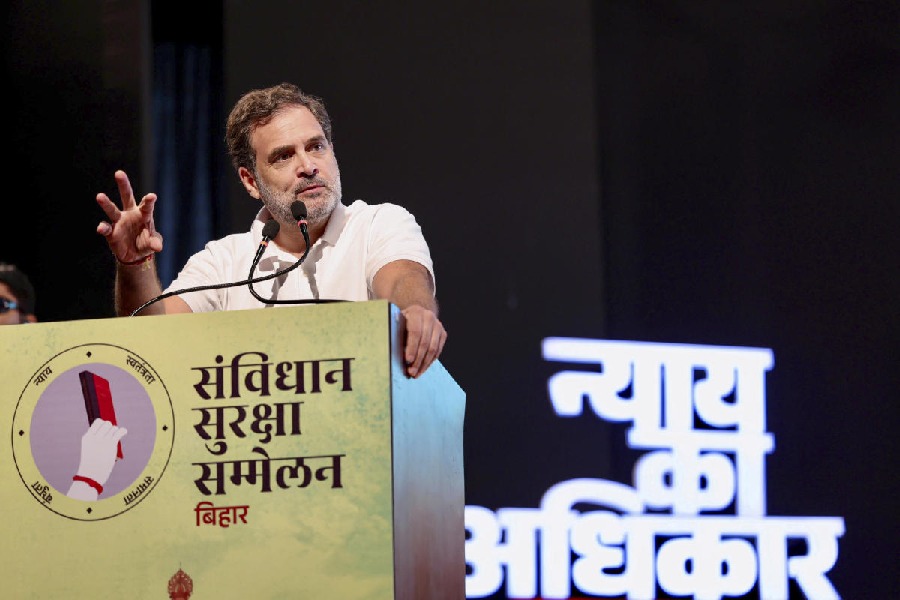 |
Catherine Deneuve is 64 in October and hardly desperate to deny it. As she dryly points out, “There’s not much point. It’s on record.” Dressed in an old green Prada tie-dye effect sweater, camel corduroy trouser suit, a Fendi wicker and tan leather bag, loafers, tinted spectacles and a perpetual wreath of cigarette smoke, she is still arrestingly, uncannily beautiful.
Not the waif she was in those early films (that would be a bit creepy) but the legs are still good, the features fine and the artfully layered hair luxuriant, though not the flaxen blonde it was in the 1960s and 1970s (that would be creepy, too). I’ve heard rumours of surgery, but can’t detect the frozen wastes of Botox and she seems nonplussed by the suggestion. “Actresses have to be able to frown.”
She prefers vitamin injections and twice-monthly visits to Francoise Morice, a facial masseuse in Paris. Apart from that she swears by fresh air (she spends weekends at her house in Normandy, gardening and walking), does Pilates, eats carefully and mostly avoids the sun. And, yes, she knows that smoking is not ideal, but she tries not to inhale too much. Why Deneuve didn’t go the way of Elizabeth Taylor or even Julie Christie, who has admitted having a facelift and to hating the ageing process, is debatable. She attributes it to her mother, Renee Deneuve, an actress, who is still alive at 96 “and amazing. Her energy is something I’ve been blessed with — so, on the whole, I’m not frightened of ageing.”
Being in demand professionally must help. Remarkably, the work never dried up, although critics have argued that much of it has been unworthy of her. One suggested she lacked confidence. “Probably a good thing,” she retorts, “given how narcissistic actors can be.” She has just finished recording the English language voiceover for Persepolis, a black-and-white animated film about the Iranian revolution, in which her daughter by Marcello Mastroianni, Chiara Mastroianni, also stars and which took the Prix du Jury at this year’s Cannes Film Festival.
Her presence at fashion shows is as sought-after as ever. Wisely, she is stinting with that particular benediction, confining it to just a few favoured designers such as Alber Elbaz at Lanvin, Stefano Pilati at Yves Saint Laurent and Louis Vuitton. It was the original, troubled genius at Yves Saint Laurent with whom she is indelibly linked. She was introduced to him by David Bailey. She wore a red and white YSL when she met the Queen in London, and chose him to dress her in Belle de Jour. “I think I knew even then that there was something subversive about those impeccable designs, which suits the film perfectly.”
Previously, Deneuve has alluded to the burden of always being photographed and of always having to live up to a 40-year-old image. But today, sipping endless espressos and so elegant in a large armchair she seems insouciant. “You catch me on a good day,” she shrugs. “I’ve just come back from a week sailing, swimming, diving. I feel very relaxed. I’m even a little brown. I wouldn’t normally take the sun, but for a week I wanted to live like that.” She flips a leg over the arm of a chair and I can see the ice queen is wearing a jewelled ankle chain.
Why am I talking to the woman that the film writer David Thomson calls “perhaps the greatest cool blonde, forever hinting at intimations of depravity”, about being a role model for older women, when she has an oeuvre of more than 100 films and almost 50 years of acting history behind her? Partly because her people had said that was all she would agree to discuss — and her involvement with Al Gore’s Climate Project, to which she donated part of the fee she received for the Louis Vuitton ad. But Deneuve announces that she doesn’t wish to discuss climate change. “Why would anyone care what I’ve got to say about politics? What can I say that people don’t already know?”
For the record, she’s sceptical about being an older role model, too. Much as she admires Vuitton and particularly what Marc Jacobs has done there, she’s not convinced that attitudes in the fashion world have significantly changed in favour of older women. “I don’t think Vuitton would have chosen me to star in a fashion campaign — this one is slightly different.”
I don’t think Deneuve’s reputation for froideur is based solely on her performance in Belle de Jour. In her 2005 autobiography Close Up and Personal, she concedes that she’s had her moments, some perhaps aggravated by the depression from which she has periodically suffered. Not that she goes into much detail. “Marvellously opaque” is the press quote on its cover — the cover! But being opaque is a large part of why she’s such a legend. It’s no coincidence that although her contribution to Belle de Jour was initially deemed inadequately blank it turned out to be exquisitely judged.
That fetishistically pale Hitchcockian hair, allied with the whey-coloured skin and inscrutably regular features are the other reason she has always seemed slightly other-worldly. “Oh, that blonde,” she says. “What a bore it was. And, oh God, the upkeep — I had to have it peroxided every week (she is a natural brunette) and it had to be blow-dried all the time.” She dyed it to please Roger Vadim, the director with whom she moved in when she was 17. “Well, no one’s perfect,” she remarks dryly. “Actually he never directly told me to. But back then, I was probably pre-empting what men wanted. Now you can be what they call a dirty blonde. I like that.”
Ah yes, Vadim, by whom she had a son, Christian, when she was 20. She and Vadim parted not long after. Then there was Bailey, who shot her for Playboy yet, despite that, managed to marry her — the only time she succumbed to the institution. Mick Jagger was the best man.
There followed an affair with Marcello Mastroianni (her co-star in A Slightly Pregnant Man), and then a Hollywood fling with Burt Reynolds. Although Mastroianni remained married, Deneuve was at his side when he died in 1996.
Her life has been far from conventional and not without its tragedies either. In 1967, her sister Francoise Dorleac, also an actress and to whom she was very close, was burnt alive in a car accident; she regrets not having been more mindful of money and I think deep down she was troubled by her experiences on Belle de Jour.
“I felt very exposed, in every sense of the word, but very exposed physically,” she wrote in her autobiography, “which caused me a lot of distress.”
Lisa Armstrong (The Times, London)











